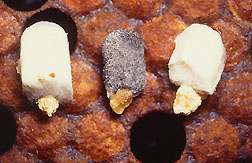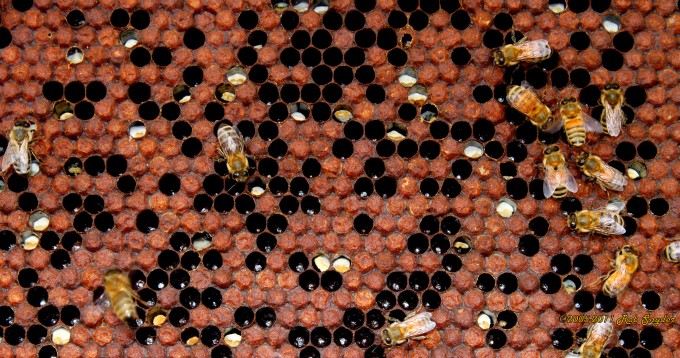Chalkbrood Disease
Ascosphaera apis
Description
Known for the distinctive “chalkbrood mummies” that are characteristic of this disease, chalkbrood disease is found worldwide and considered by most to be a secondary pest. Chalkbrood is the most common fungal disease to plague honey bee brood, but will often clear up on its own accord in a healthy hive.
Etiology
The causative agent of chalkbrood disease is Ascosphaera apis, a fungus that affects 3-4 day old larvae and is spread through the ingestion of spores. Spores germinate in the gut of the larva and rapidly produce mycelium. The fungus eventually kills its host through direct competition for nutrients, most often when the larvae are in the upright position. Infected larvae are soon covered in the white cotton-like mycelium that will fill the entire brood cell. The mycelium will begin to harden and in some cases, darken to grey or black. These “mummies” can be found in sealed and unsealed cells. If enough are present under cappings, the frame will rattle when shaken.
Cases of chalkbrood are often seen in springtime, or when conditions are cool and damp and therefore favorable for fungal growth.
Spread and Control
Chalkbrood is often considered to be a secondary pest, spread by drifting bees. Keeping strong, healthy colonies is the best form of prevention. If populations are adequate, adult honey bees are able to remove the chalkbrood mummies to minimize the spread of the disease. Chalkbrood mummies are often found on the bottom board and hive entrance.
There are currently no chemical controls on the market for use against chalkbrood. In a more serious case of chalkbrood, requeen with more resistance stock or for more hygienic behaviors.



